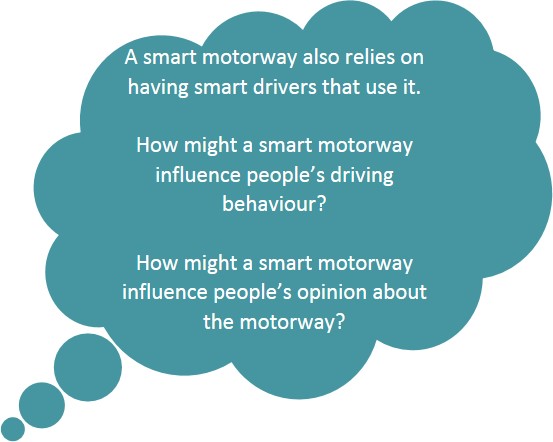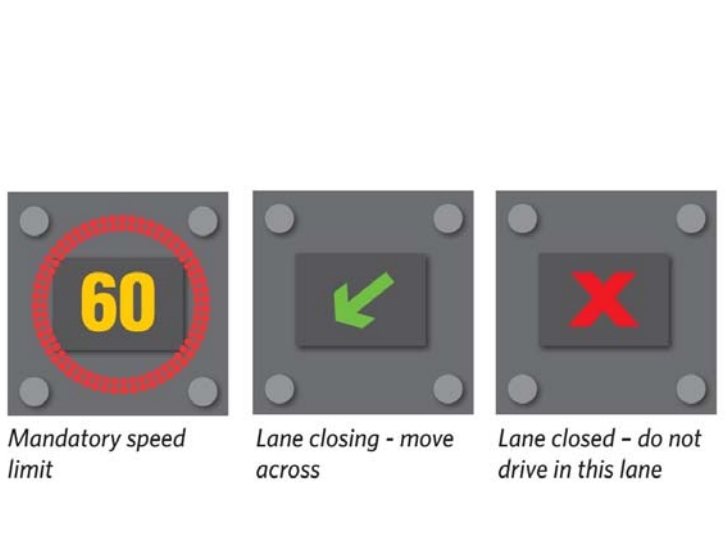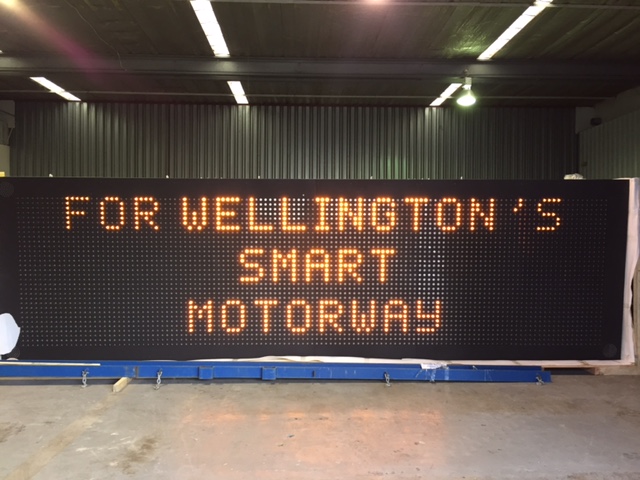Lane control signs
These are square electronic variable signs with three display options:
- Variable speeds – changing the speed limit as conditions change is at the heart of a smart motorway. The speed limit displayed on the electronic speed sign is the legal speed limit. Smart motorways include automatic enforcement systems to further encourage drivers to keep to the posted speed limit.
- Red X – when an incident occurs or work is being carried out on the road, the red X is displayed to close the lane. It is illegal and potentially very dangerous to drive under a red X.
- Green arrow – directs drivers to change lanes.
Emergency stopping areas
Because there is no shoulder on the northbound lanes, two emergency stopping areas will be built. Normal motorway rules apply; it is illegal to stop in an emergency stopping area for any other reason than an emergency. The stopping areas are fitted with sensors, CCTV cameras, and a phone which connects straight through to Wellington’s Transport Operations Centre (WTOC). Operators at the WTOC are alerted when a vehicle stops in the emergency stopping area and could send a road policing officer to check out the situation. Once a vehicle is ready to leave the emergency stopping area, WTOC operators can use the red X to close the lane allowing the vehicle time to get up to the speed of the main traffic flow.

Variable message signs
These signs give drivers useful information so they can make informed decisions about their travel.
Being a smart driver
So all road users enjoy the benefits of a smart motorway, everyone has to contribute. It is easy to be a smart driver. All you need to do is:
- Keep to the posted speed limit (the posted limit is the legal limit) – the smart system calculates the optimum speed to minimise congestion and to get the maximum number of vehicles through the area. As well as breaking the law, exceeding the speed limit will put drivers to the back of the queue faster and just increase the size and duration of the queue.
- Minimise lane changes – changing lanes can have a shockwave effect on following vehicles. If everyone stays in the lane where possible, traffic moves smoothly and everyone arrives at their destination sooner.
Smart motorways are used in several other countries. You can find out about the introduction of smart motorways in Britain by the British Highways Agency.







